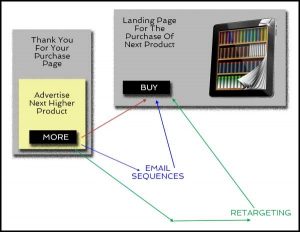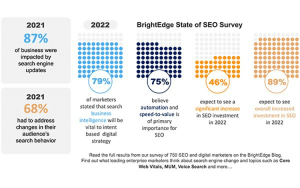3 Ways To Use Emotional Indicators In Keyword Research
Do you really know how your target audience feels about your products or about topics related to your brand?
digital It’s easy to understand how consumers search for various topics and the words they use to describe them. Social listening tools also help to gain insight into sentiment. But what about how your audience feels as they search?
Emotion-based keyword research, an emerging approach, provides insight into the “feel” portion of the consumer’s journey. It takes marketers from considering thinking to feeling to doing.
With this insight, marketers are able to better understand their audiences, leading to content creation that is increasingly relevant and effective by directly addressing emotions.
Imagine that you are developing a content strategy around the theme of sustainability and are tasked with gathering in-depth information about the needs and interests of your target audience.
Based on search volume data, standard keyword research helps you conclude that people search the most for subtopics like deforestation and food issues (food security, food waste, etc.), indicating strong points of interest for consumers. It’s a correct assessment, but not the full story.
Emotion-based keyword research takes things one step further by assigning emotional indicators to each keyword.
For example, data indicates that people searching sustainability subtopics such as food security and global warming frequently use keywords like “risk,” “consequences,” and “shortage.” From this, we can infer they are most likely feeling anxiety.
Insights can then be packaged to not only say what people are searching for, but how they might be feeling as they search.
Here is a sampling of emotions or “emotional indicators” (i.e., curiosity, which isn’t classified as a direct emotion) that are possible to assign to keywords: Confusion, Anger/Frustration, Anxiety, Optimism, Skepticism, Fear, Urgency, Trust, Curiosity.
Here are three things to keep in mind as you get started:
This type of keyword research will not be valuable to all companies in all situations. In situations when speed is crucial and/or if budgetary constraints are an issue, emotion-based keyword research may not be feasible, given the effort required to do it properly.
It may also be less useful when working with a straightforward or well-understood brand, product, or topic (i.e., socks) — data-driven insights from standard keyword research will still inform overarching content needs and subtopics of interest that can stand on their own.
Emotional keyword research really shines when brands are dealing with complex topics or need to find new ways to reach and engage their audience. Here are some situations when it is most useful:
- Completing research around a highly complex or controversial brand, product or topic (i.e., medical products / services, COVID-19, political / social issues)
- Creating new content for specific audiences
- Building a brand messaging strategy
- Optimizing existing content to meet audience intent
- Adding to qualitative user research or when user research is not an option (specifically early in the customer journey)
2. Know that this is a complex and evolving process
Incorporating emotion-based indicators into your existing keyword research strategy is a valuable process, but it is complex.
There is no publicly available resource that provides an all-inclusive list of keyword modifiers matched to an emotion (or emotional indicator), so ongoing, manual effort is required to perfect this process.
By “manual,” we mean starting with a list of emotions or emotional indicators and then aligning them one by one to a list of modifiers that someone might use if they feel a particular way.
For example, someone who uses the word “actual” in their search may be feeling skepticism, and someone who uses the word “risk” might be feeling a sense of anxiety.
The new keyword research process might look like this:
- Complete standard keyword research by exporting keyword data from your favorite SEO tool
- Categorize keywords by topic
- NEW: Categorize keyword modifiers by emotional indicators (for example, “actual” equals skepticism)
3. Be prepared to use the data to improve your content strategy
Garnering emotion-based keyword insights is extremely informative and adds new depth to your content strategy — but what good is it without a way to translate insights into action?
The most important step in this process is interpreting how your content strategy can evolve to align with your audience’s feelings. Are they feeling anxious, indicating a lack of trust?
Incorporate customer reviews or social proof into your content strategy to provide them with reassurance. Are they feeling confused, indicating a lack of clarity? Incorporate videos or long-form content that offers answers to questions in a way that is easy to digest.
In the end, although it is time-intensive, applying emotion-based insights to your keyword research is a worthwhile addition to a forward-thinking marketing strategy. It is an innovative way to understand your audience to create impactful content and messaging that resonates with them, which keeps them engaged with your brand.
(40)
Report Post






